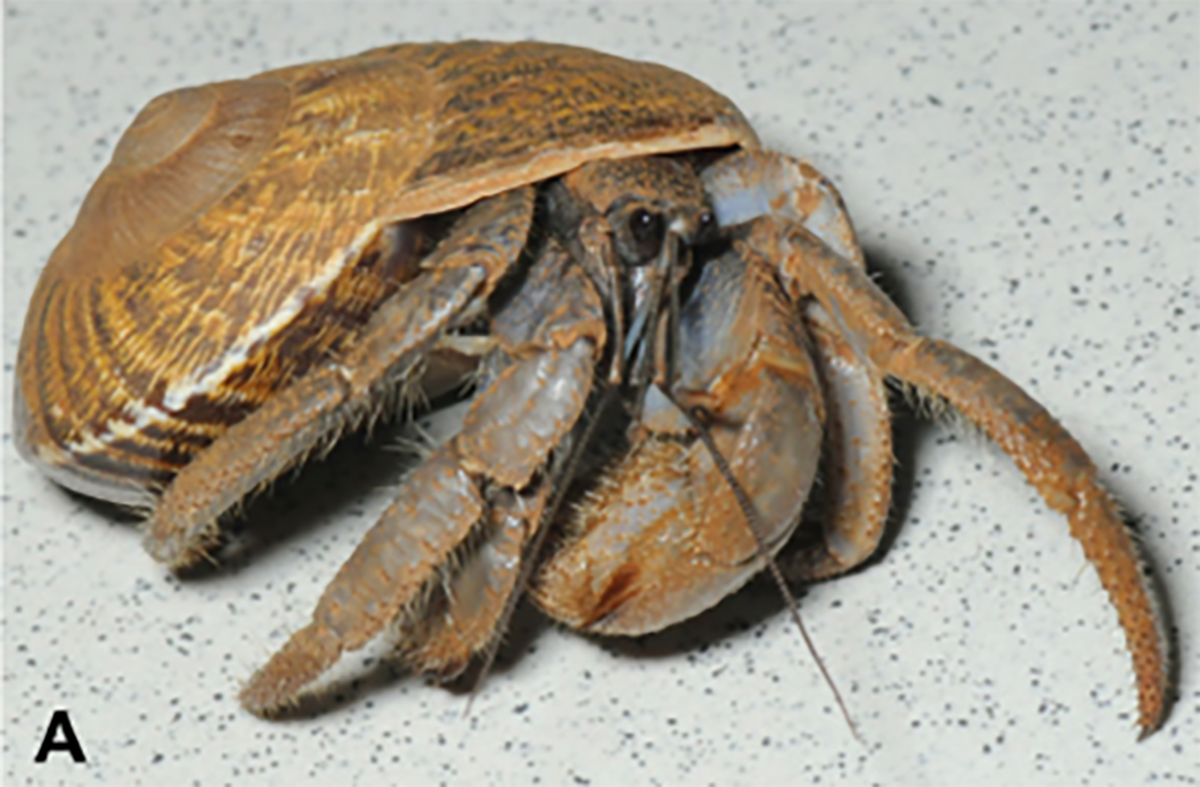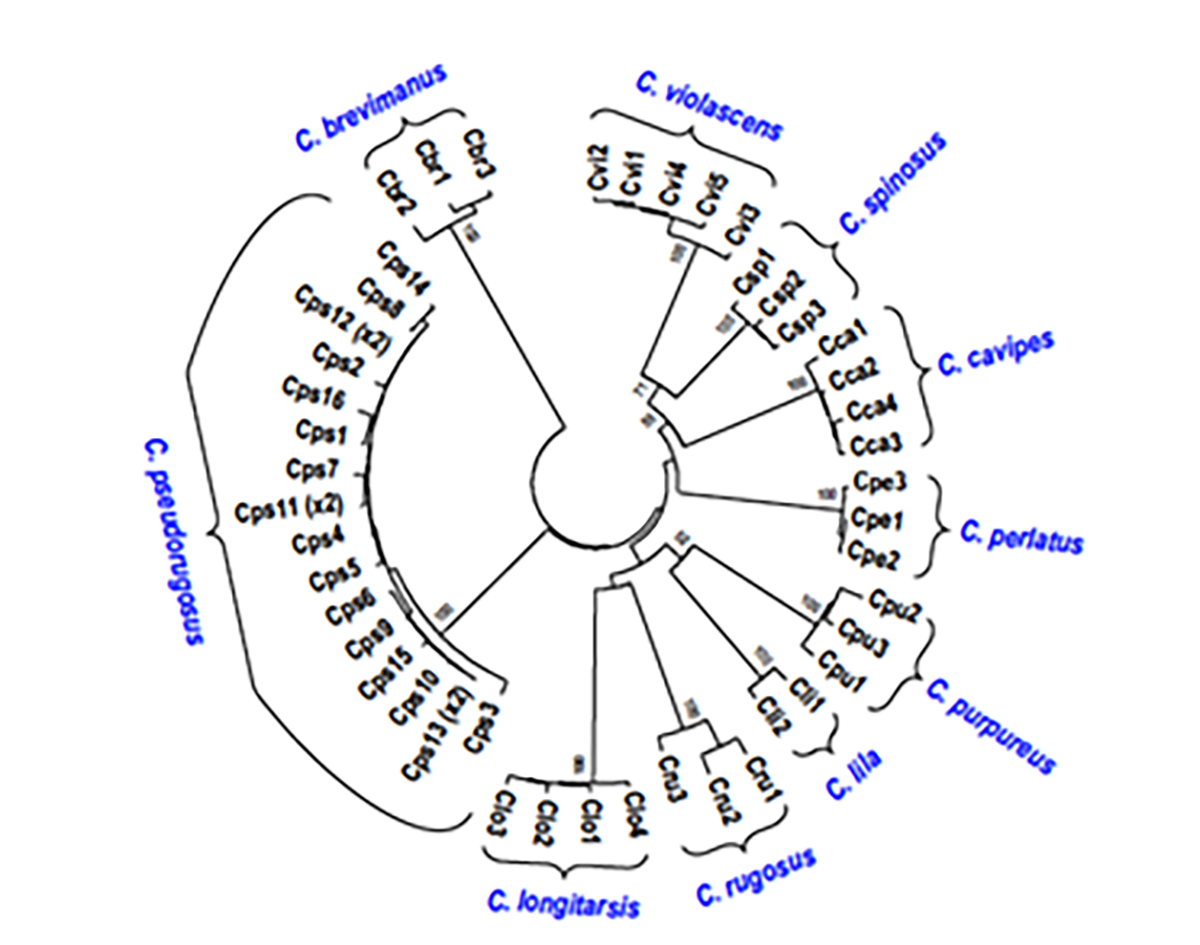Morphological and Molecular Evidence for the Identity of Two Land Hermit Crabs Coenobita longitarsis De Man, 1902 and C. pseudorugosus Nakasone, 1988 (Crustacea: Decapoda: Anomura: Coenobitidae)
Summary
The hermit crabs that most people encounter are terrestrial, occupying a a variety of snail shells (and even plastic trash when shells are rare) throughout the tropics. Despite their iconic presence on tropical beaches, few people are aware that the taxonomy of terrestrial hermit crabs is still not fully resolved. All terrestrial hermit crabs belong to the genus Coenobita. We clarify the identity of two Coenobita species that have not been studied since they were originally described. The first species is the sandy beach dweller Coenobita pseudorugosus, and through this study we are certain it is morphologically and genetically distinct from the more common species C. rugosus. We provide a list of characters that can be used to tell the two species apart. The second species we studied is the elusive forest-dweller C. longitarsis, and we were able to provide a detailed description of male characters (important in taxonomy) and record its presence in new localities. Moreover, our study hints at a possible reason for its rarity: it seems to only utilize native land snail shells from dense forests that extend from the coast to several kilometers inland. Both beach forests and their native land snails are increasingly threatened, which might contribute to its rarity. Tellingly, in the Philippines we only know the species from Sibuyan Island, which is extensively forested but threatened by mining.
Significance
Our study clears up some long-standing questions on the identity of terrestrial hermit crabs. These land hermit crabs (genus Coenobita) are iconic beach animals, but the different species can be difficult to tell apart. We included detailed descriptions to help distinguish two rarely-encountered species from more common species of land hermit crabs, and provided DNA sequence data that will make it easier to identify these species in the future. In this way, we help describe and understand nearshore biodiversity in the tropical Indo-West Pacific (including the Philippines, Indonesia, and Papua New Guinea). This study was also an opportunity to collaborate with colleagues in Taiwan and Indonesia.
Photos


Authors:
Hsi-Te Shih (Department of Life Science, National Chung Hsing University)
Kai Chang (Department of Life Science, National Chung Hsing University)
Félix Adhi Pramono (Jalan Kacang Polong I #29, Bojong Indah, Rawabuaya – Cengkareng, Jakarta Barat,)
Maria Celia (Machel) D. Malay (Division of Biological Sciences, University of the Philippines Visayas; Marine Science Institute, University of the Philippines)
Read the full article:
Read the full article: https://zoolstud.sinica.edu.tw/Journals/62/62-52.html
